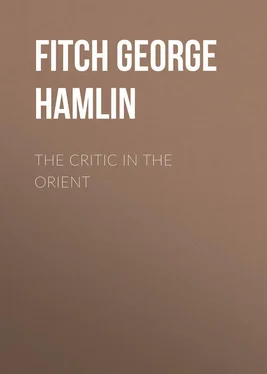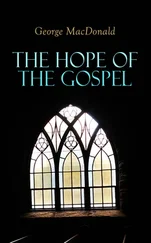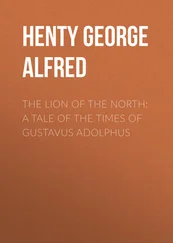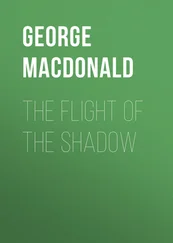George Fitch - The Critic in the Orient
Здесь есть возможность читать онлайн «George Fitch - The Critic in the Orient» — ознакомительный отрывок электронной книги совершенно бесплатно, а после прочтения отрывка купить полную версию. В некоторых случаях можно слушать аудио, скачать через торрент в формате fb2 и присутствует краткое содержание. Жанр: periodic, foreign_antique, foreign_prose, на английском языке. Описание произведения, (предисловие) а так же отзывы посетителей доступны на портале библиотеки ЛибКат.
- Название:The Critic in the Orient
- Автор:
- Жанр:
- Год:неизвестен
- ISBN:нет данных
- Рейтинг книги:5 / 5. Голосов: 1
-
Избранное:Добавить в избранное
- Отзывы:
-
Ваша оценка:
- 100
- 1
- 2
- 3
- 4
- 5
The Critic in the Orient: краткое содержание, описание и аннотация
Предлагаем к чтению аннотацию, описание, краткое содержание или предисловие (зависит от того, что написал сам автор книги «The Critic in the Orient»). Если вы не нашли необходимую информацию о книге — напишите в комментариях, мы постараемся отыскать её.
The Critic in the Orient — читать онлайн ознакомительный отрывок
Ниже представлен текст книги, разбитый по страницам. Система сохранения места последней прочитанной страницы, позволяет с удобством читать онлайн бесплатно книгу «The Critic in the Orient», без необходимости каждый раз заново искать на чём Вы остановились. Поставьте закладку, и сможете в любой момент перейти на страницу, на которой закончили чтение.
Интервал:
Закладка:
Two enormous gilded pillars support the vaulted roof of the sanctum, which is formed of beams in a very curious pattern. A frieze of medallions of birds, gilded and painted, runs around the top of the wall. The shrine dates back for two and one-half centuries and is of rich gold lacquer. The bronze incense burner, in the form of a lion, bears the date of 1635. The great war drum of Ieyasu, the first of the Tokugawa shoguns, lies upon a richly decorated stand. Back of the temple is the octagonal hall, which houses the tomb of the second shogun. This tomb is the largest example of gold lacquer in the world, and parts of it are inlaid with enamel and crystal. Scenes from Liao-Ling, China, and Lake Biwa, Japan, adorn the upper half, while the lower half bears elaborate decoration of the lion and the peony. The base of the tomb is a solid block of stone in the shape of the lotus. The hall is supported by eight pillars covered with gilded copper, and the walls are covered with gilded lacquer. The enormous amount of money expended on these shrines will amaze any foreign visitor, as well as the profound reverence shown by the Japanese for these resting places of the shoguns.
Passing along a wide avenue traversed by electric cars one soon reaches Hibiya Park, one of the show places of Tokio. To the European tourist or the visitor from our Eastern States the beauty of the vegetation is a source of marvel, but San Francisco's Golden Gate Park can equal everything that grows here in the way of ornamental shrubs, trees and flowers. On the south side of the park are the Parliament buildings, and near by the fine, new brick buildings of the Naval and Judicial Departments and the courts. Near by are grouped many of the foreign legations, the palaces of princes and the mansions of the Japanese officials and foreign embassadors. Here also is the Museum of Arms, which is very interesting because of the many specimens of ancient Japanese weapons and the trophies of the wars with China and Russia. In this museum one may see the profound interest which the Japanese pilgrims from all parts of the empire take in these memorials of conquest. To them they rank with the sacred shrines as objects of veneration.
Not far away is the moat which surrounds the massive walls of the imperial palace, open only to those who have the honor of an imperial audience. These walls are of granite laid up without mortar, the corner stones being of unusual size. The visitor may see the handsome roofs of the imperial palaces. Those who have been admitted declare that the decorations and the furniture are in the highest style of Japanese art, although the simplicity and the neutral colors that mark the Shinto temples prevail in the private chambers of the Emperor. In the throne chamber and the banquet hall, on the other hand, gold and brilliant hues make a blaze of color. Near the palace grounds are the Government printing office and a number of schools.
Turning down into Yoken street, one of the great avenues of traffic, you soon reach Uyeno Park – the most popular pleasure ground of the capital, and famous in the spring for its long lines of cherry trees in full blossom. In the autumn it impressed me, as did all the other Japanese parks, as rather damp and unwholesome. The ground was saturated from recent rain; all the stonework was covered with moss and lichen; the trees dripped moisture, and the little lakes scattered here and there were like those gloomy tarns that Poe loved to paint in his poems. Near the entrance to this park is a shallow lake covered with lotus plants, and a short distance beyond from a little hill one may get a good view of the buildings of the imperial university. Here is a good foreign restaurant where one may enjoy a palatable lunch. Near by on a slight eminence stands a huge bronze image of Buddha, twenty-one and one-half feet high, called the Daibutsu. It is one of several such figures scattered over the empire. Passing through a massive granite torii, or gate, one reaches an avenue of stately cryptomeria, or cedar trees that leads to a row of stone lanterns presented in 1651 by daimyos as a memorial to the first shogun. The temple beyond is famous for its beautiful lacquer.
Near at hand are the temples and tombs of the six shoguns of the Tokugawa family, buried in Uyeno Park. These temples are regarded as among the finest remains of old Japanese art. The mortuary temples bear a close resemblance to those in Shiba Park. The second temple is the finer and is celebrated for the gilding of the interior walls, the gorgeous decoration of the shrines and the memorial tablets in gold lacquer. Here, also, are eight tablets erected to the memory of eight mothers of shoguns, all of whom were concubines.
A short distance from Uyeno Park is the great Buddhist temple known as Asakusa Kwannon, dedicated to Kwannon, the goddess of mercy. The approaches to this temple on any pleasant day look like a country fair. The crowd is so dense that jinrikishas can not approach within one hundred yards. The shrine dates back to the sixth century and the temple is the most popular resort of its kind in Tokio. On each side of the entrance lane are shops, where all kinds of curios, toys, cakes, et cetera, are sold. The temple itself is crowded with votaries who offer coins to the various idols, while below (near the stairs that give entrance to the temple) are various side booths that are patronized by worshipers. Some of these gods promise long life; others give happiness, and several insure big families to women who offer money and say prayers.
One of the remarkable jinrikisha rides in Japan is that from Uyeno to Shimbashi station through the heart of Tokio by night. This takes about a half hour and it gives a series of pictures of the great Japanese city that can be gained in no other way. Here may be seen miles of little shops lining alleys not over ten or twelve feet wide, in most of which work is going on busily as late as eleven o'clock. In places the sleepy proprietors are putting up their shutters, preparatory to going to bed, but in others the work of artisan or baker or weaver goes on as though the day had only fairly begun. Most of these shops are lighted by electricity, but this light is the only modern thing about them. The weaver sits at the loom precisely as he sat two thousand years ago, and the baker kneads his dough and bakes his cakes precisely as he did before the days of the first shogun. This ride gives a panorama of oriental life which can be equaled in few cities in the world. Occasionally the jinrikisha dashes up a little bank and across a bridge that spans a canal and one catches a glimpse of long lines of house boats, with dim lights, nestling under overhanging balconies. Overall is that penetrating odor of the Far East, mingled with the smell of bilge water and the reek of thousands of sweating human beings. These smells are of the earth earthy and they led one to dream that night of weird and terrible creatures such as De Quincey paints in his Confessions of an English Opium Eater .
The Most Famous City of Temples in All Japan
The most magnificent temples in Japan are at Nikko, in the mountains, five hours' ride by train from Tokio. What makes this trip the more enjoyable to the American tourist is that the country reminds him of the Catskills, and that he gets some glimpses of primitive Japanese life. The Japanese have a proverb: "Do not use the word 'magnificent' until you have seen Nikko." And anyone who goes through the three splendid temples that serve as memorials of the early shoguns will agree that the proverb is true.
The railroad ride to Nikko is tedious, although it furnishes greater variety than most of the other trips by rail through the Mikado's empire. But as soon as one is landed at the little station he recognizes that here is a place unlike any that he has seen. The road runs up a steep hill to the Kanaya Hotel, which is perched on a high bank overlooking the Daiyagawa river. Tall cedar trees clothe the banks, and across the river rise mountains, with the roofs of temples showing through the foliage at their base. This hotel is gratefully remembered by all tourists because of the artistic decoration of the rooms in Japanese style and the beneficent care of the proprietor, which includes a pretty kimono to wear to the morning bath, with straw sandals for the feet, and charming waitresses in picturesque costumes.
Читать дальшеИнтервал:
Закладка:
Похожие книги на «The Critic in the Orient»
Представляем Вашему вниманию похожие книги на «The Critic in the Orient» списком для выбора. Мы отобрали схожую по названию и смыслу литературу в надежде предоставить читателям больше вариантов отыскать новые, интересные, ещё непрочитанные произведения.
Обсуждение, отзывы о книге «The Critic in the Orient» и просто собственные мнения читателей. Оставьте ваши комментарии, напишите, что Вы думаете о произведении, его смысле или главных героях. Укажите что конкретно понравилось, а что нет, и почему Вы так считаете.












